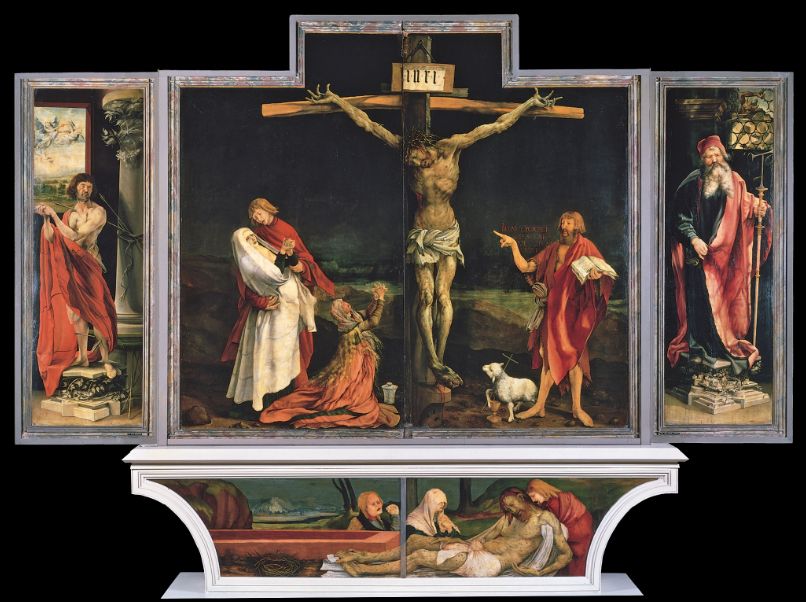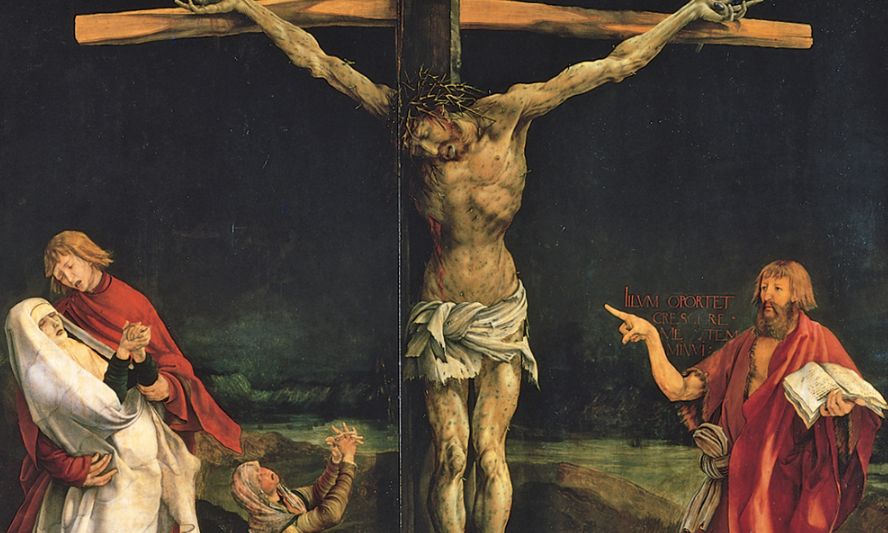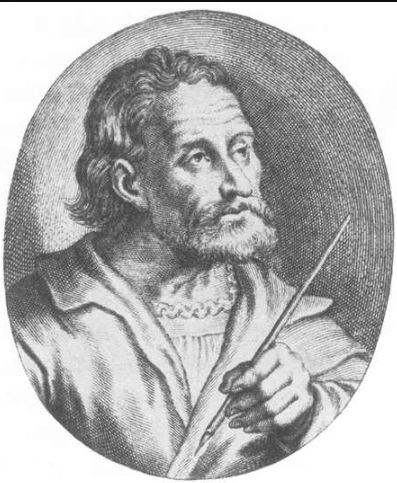Matthias Grünewald (born Mathis Gothardt Neithardt, died 1528) was a largely unknown German painter during his lifetime and for many years after his death. It wasn't until the 17th century that he became widely known by the name Grünewald. Despite the lack of recognition during his life, the few works he left behind, especially the Isenheim Altarpiece, continue to astonish the art world.
One of Grünewald's most renowned works is the multi-paneled altarpiece he created for the Monastery of St. Anthony in Isenheim, located in present-day Alsace, France. This altarpiece includes scenes such as the Crucifixion, the Annunciation, the Nativity, and the Resurrection. The exterior of the altarpiece features the depiction of Christ's crucifixion, a scene of intense agony and death. The Crucifixion panel shows Christ's scourged and wounded body, his arms elongated under the weight of his body hanging heavily from the cross, his hands twisted in spasms, eyes closed, and mouth slightly open, signifying his final breath. This graphic portrayal not only emphasizes Christ's suffering but also highlights the dual torment of both body and spirit.

Grünewald's artistic style is filled with intense emotion, employing trembling brushstrokes, anguished lines, and stark color contrasts to create a profound visual impact. The painting not only portrays Christ's suffering but also the grief of the figures present, including John the Baptist, Saint John supporting the fainting Virgin Mary, and Mary Magdalene kneeling in prayer and sorrow. The desolate ground and somber sky further enhance the tragic atmosphere of the scene.
These paintings are not merely religious artworks but also serve a strong social function. In the hospital of the Isenheim Monastery, the paintings, particularly the Crucifixion, were used to comfort and inspire patients suffering from severe illnesses. In the late 15th century, Europe was struck by a syphilis epidemic, and the Isenheim hospital specialized in treating such patients. Grünewald's artwork, by depicting Christ's agony and suffering, provided spiritual solace and strength to patients, helping them find a form of transcendence over their physical pain.

Grünewald's art holds a unique position during the German Reformation. His works not only reflect the depth of religious faith but also the contemporary understanding of suffering and redemption. Formally, his altarpiece belongs to a type particularly popular in Germany, comprising a central sculpted figure, Gothic tracery at the top, and a predella at the bottom. The creators of these altarpieces were independent artists, whose social status and organizational structure were closer to that of oil painters, marking a shift in the artist's role and the diversity of artistic forms.
In Southern Germany, the preferred material for sculpture was linden wood, which was light, fine-grained, and easy to carve, allowing for extremely delicate detail. Grünewald's artistic creations, though primarily in painting, were deeply influenced by this sculptural style, evident in the intricate detail and texture in his works.

These artworks showcase not only Grünewald's exceptional painting skills but also his profound understanding of religion and human suffering. His works use visual language to closely intertwine religious faith with human experience, delivering a powerful emotional impact to the viewer. Although his name and works were not widely known during his lifetime and for many years after, today, Grünewald is celebrated as one of the greatest painters of the German Renaissance. His works hold significant importance in art history and have a lasting influence in the realm of religious art.